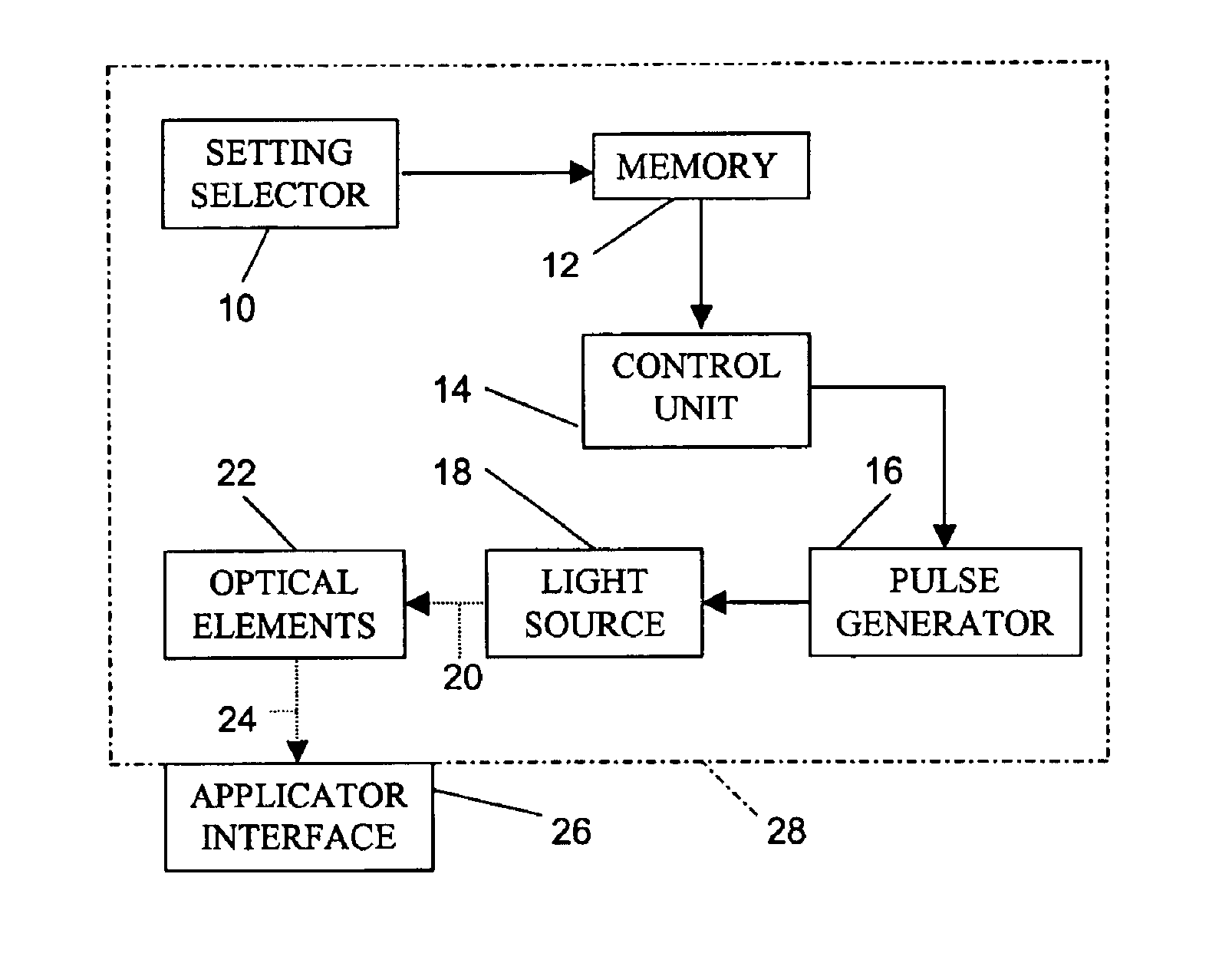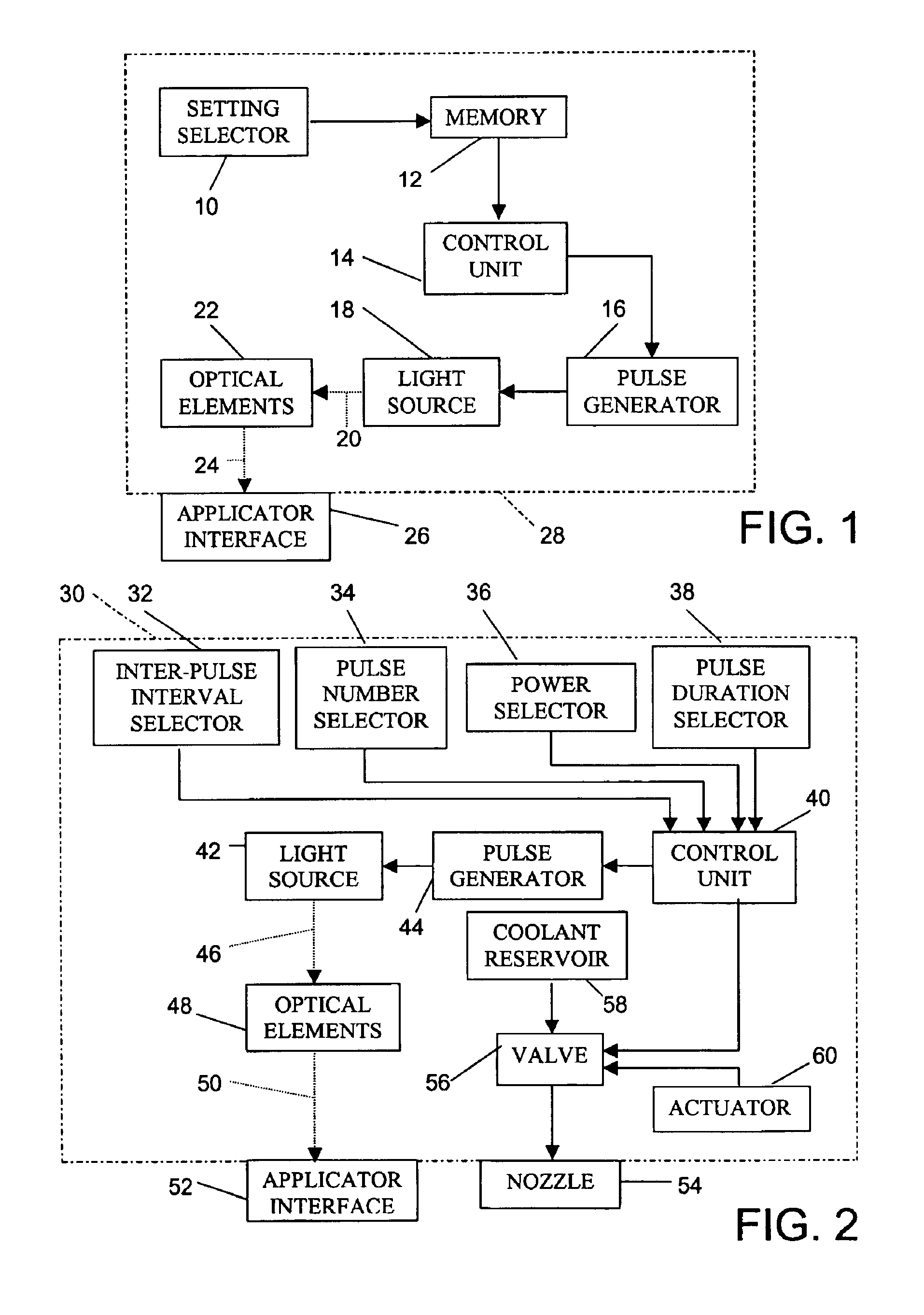Hair treatment method
a hair treatment and hair technology, applied in the field of hair treatment process, can solve the problems of consuming public with few options in removing undesired hair, methods carrying a certain amount of risk of skin damage, and shortwavelengths less than 550 nm are not useful, so as to avoid skin damage, safe for home use, and energy consumption sufficient
- Summary
- Abstract
- Description
- Claims
- Application Information
AI Technical Summary
Benefits of technology
Problems solved by technology
Method used
Image
Examples
Embodiment Construction
[0036]As depicted in FIG. 1, a device for generating light pulses for application to a skin surface in a hair treatment process includes a manually operable setting selector 10 connected at an output to a memory 12 in turn connected at an output to a control unit 14. Memory 12 stores pre-established combinations of light pulse parameters including pulse width or duration, inter-pulse interval or delay time, pulse number, light intensity, and total treatment energy. Control unit 14 may be a microprocessor or a special logic circuit connected to a pulse generator 16 for inducing the generator to produce a sequence of electrical control pulses fed to a source 18 of incoherent light energy. Source 18 produces light with a spectral distribution including wavelengths between 500 nm and 1200 nm. Control unit 14 may be connected directly to source 18 where the source incorporates means for varying pulse parameters pursuant to encoded instructions.
[0037]Light source 18 (as well as the entire...
PUM
 Login to View More
Login to View More Abstract
Description
Claims
Application Information
 Login to View More
Login to View More - R&D
- Intellectual Property
- Life Sciences
- Materials
- Tech Scout
- Unparalleled Data Quality
- Higher Quality Content
- 60% Fewer Hallucinations
Browse by: Latest US Patents, China's latest patents, Technical Efficacy Thesaurus, Application Domain, Technology Topic, Popular Technical Reports.
© 2025 PatSnap. All rights reserved.Legal|Privacy policy|Modern Slavery Act Transparency Statement|Sitemap|About US| Contact US: help@patsnap.com


